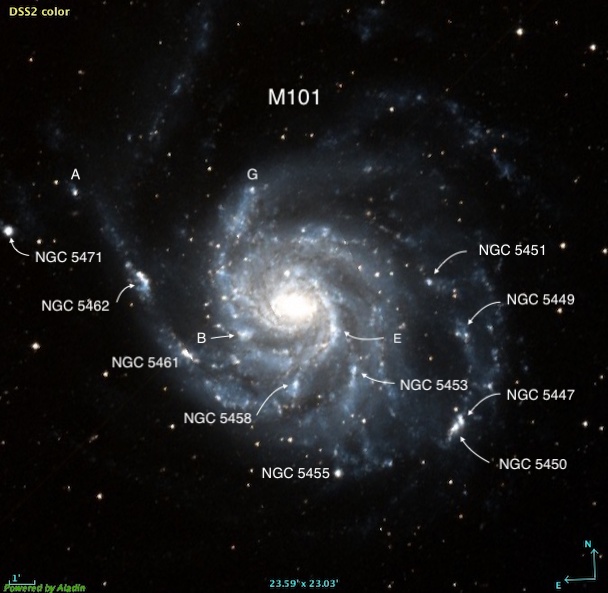OR: Spirals Of Spring
|
My usual “close-in” observing site in Sonoma County has been closed since March 23rd, due to the pandemic restrictions, but it opened up again two months later. After hearing this
news, a group of friends (some starved for photon food) met on May 23rd (Memorial Day weekend) at Lake Sonoma. We set up our scopes “socially spaced apart”m and although we didn't
share eyepiece views, it's safe to say everyone had a great time. I started observing at 10:15 (end of astronomical twilight) and stayed glued to the eyepiece of my 24-inch
Starstructure telescope for the next four hours.
We could hardly have asked for better observing conditions. The temperature was quite mild (no jacket or even sweater), with only an occasional light breeze and no dew. The skies were fairly dark, with SQM readings of 21.52 around 11:30, peaking at 21.55 around 1:00 AM (that’s as good as any reading I’ve had there). Seeing was average, but I was easily able to observe galaxies at 375x. The seeing softened and the transparency lowered a bit during the last 60 to 90 minutes. I started off by reobserving two supernovae I had seen 4 days earlier -- 14th magnitude Type II SN 2020jfo in My notes were made at 225x and 375x (using both powers on each object). The images are courtesy of the Sloan Digital Sky Survey, with the exception of Steve Gottlieb
Pierre Méchain discovered M99 in March 1781 using a 3-inch refractor from Paris. 65 years later, the third Earl of Rosse (William Parsons), discovered its spiral structure. He
had a little advantage in aperture — the 72" Leviathan of Parsonstown. M99 was just the 2nd spiral discovered visually, following
M61 = NGC 4303 M61 was discovered by Italian astronomer Barnaba Oriani on May 5th, 1779 while observing a comet! Messier also found it independently the same night, but he
initially assumed he was viewing the comet itself. Once again it was recognized as spiral through the 72-inch on March 1, 1851. Lord Rosse's sketch shows two prominent knots in the
spiral arms, as well as the nucleus. M61 was high on my observing list because of a Type II supernova discovered earlier in May (SN 2020jfo). This is the 8th supernova in M61
discovered since 1926. The current record holder is
M61 was striking in my scope. The central region was strongly concentrated with a bright elongated bar region oriented N-S. A very small, intensely bright nucleus highlighted the center. Three arms were easily seen. A short but well defined arm angles SW-NE on the north side (outside the eastern arm). It ended at a relatively bright HII knot [HK83] #91, which was well defined and noticed immediately. The eastern arm, which emerged from the north side of the bar, was very well defined and extended east of the core, then headed south and angled towards the southwest. The western arm began on the south or southeast side of the bar and rotated counterclockwise towards to the west and bent in the northwest direction. It past inside a 14th mag star [1.1' W of center]. A subtle brightening or knot, [HK83] #155, was along this arm 40" S of center (collinear with the northern knot and the center).
William Herschel discovered NGC 4535 in December 1785 (very early in the morning). He noticed it contained a couple of stars, so hypothesized that it might be a cluster of stars mixed with nebulosity or a cluster seen at great distance with no nebulosity. The nickname the "Lost Galaxy” is from Leland S. Copeland's February 1955 Sky & Telescope article "Adventuring in the Virgo Cloud”. He described a star hop through the Virgo Cluster using his 8" Cave reflector and noted, "North of the Diamond is a very dim spiral, here called the Lost Galaxy, NGC 4535.” There’s nothing “lost” about it, except he probably had a difficult time locating it due to its low surface brightness. In my 24-inch, NGC 4535 is a bright, large, face-on spiral with a low contrast "S" shape and a halo extending ~5'x4' N-S. The galaxy was strongly concentrated with a small bright core elongated N-S and an intense quasi-stellar nucleus. A mag 14.5 star is superimposed 0.8' SW of center. The northern arm was subtle; it curved clockwise to the west, passing close to a mag 13.5 star 1' N of center. A faint 15" knot, [HK83] #157, was at the end of this arm, 1' NW of center. A low contrast arm on the south side curled towards the east and north. A mag 15 star is 1' south of center (just south of the arm) and a mag 14 star is 2' south of center at the edge of the outer halo.
NGC 4536 is another William Herschel discovery from January 1784. Herschel never described seeing spiral structure in any galaxy, but here’s how it was sketched in 1856 through the 72-inch in Ireland.
NGC 4536 had a striking appearance in my 24”. The galaxy appeared elongated at least 3:1 NW-SE with two long slightly arched arms, ~6.5’x2.0'. It was strongly concentrated with a bright elongated core that intensified to a very small but non-stellar nucleus, but I didn’t see a bar as distinctly drawn in Rosse’s sketch. A long arm extending to the east was attached on the north side of the core. It was brightest in the initial 1.5'-2' section angling to the SE. The arm dimmed with a diffuse, lower surface brightness extension out to roughly 3.5' SE of center, then spreading further south at the eastern end. The western arm was also brightest in the 1' section rooted to the west side of the core. The arm dimmed and thinned but stretched NW for ~3', where is seemed to bend north and fade out.
NGC 5248 is another William Herschel discovery, made in April of 1784. He was in his observing prime that year — discovering 641 galaxies! The 1851 sketch (below) made at Parsonstown, Ireland with the 72-inch shows the two main spiral arms and a “star” at the left (east) end, which is actually the brightest HII region.
I found an impressive two-armed spiral extending ~3.5’x2.5’ NW-SE, with the arms immersed in the glow of the disc. The prominent oval core appeared mottled and contained a small brighter nucleus. A fairly well defined spiral arm was attached on the northeast side, near an easy mag 15.3 star 0.7' north of center. It curved clockwise along the east side and appeared somewhat diffuse, blending into the glow of the disc on the interior and exterior sides. It terminated at a very diffuse HII patch ([HK 83] #9), 1.2' southeast of center. The western arm had a higher surface brightness with a very sharply defined outer edge and a mottled or uneven appearance. It was easily traced at 225x and 375x with the brightest part detached from the core and extending almost due north, terminating 1.5' NW of center. A mag 13.7 star is 1.7' south, just outside the halo.
M101 = NGC 5457 M101 is also a Pierre Méchain discovery in March 1781 using his 4-inch refractor. When William Herschel logged the galaxy in 1789, he also recorded
I spent quite a bit of time working through all these knots in M101, 10 of which have NGC designations. They were all identified with certainty, as well as 4 small,
low contrast knots from an article written by Howard Banich in the June 2013 issue of Sky &Telescope, labeled as A, B, E and G.
|
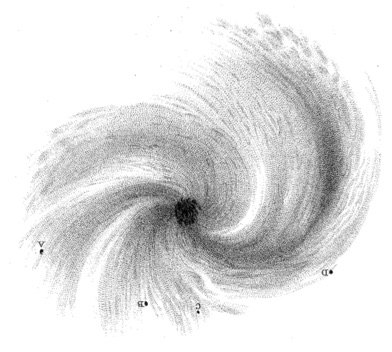
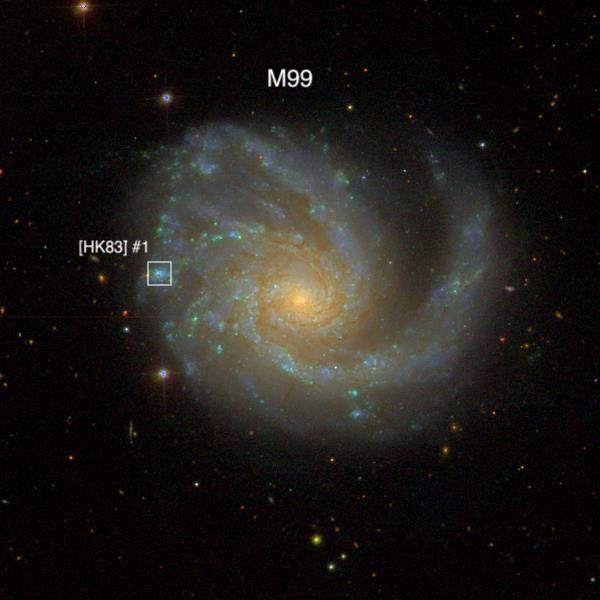
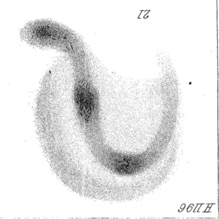
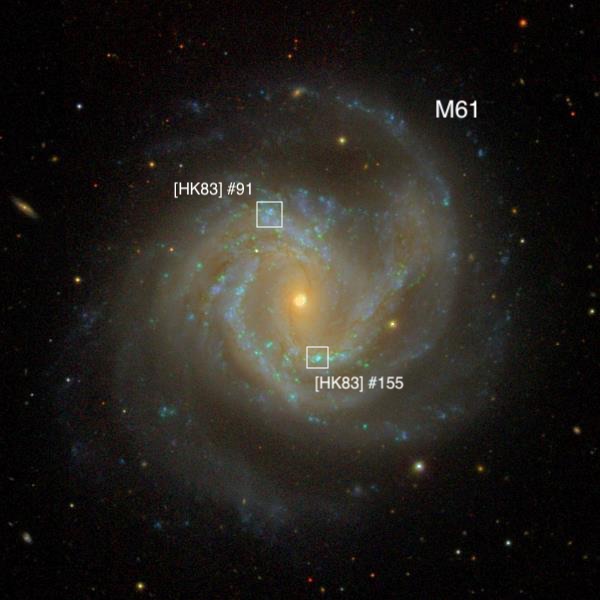
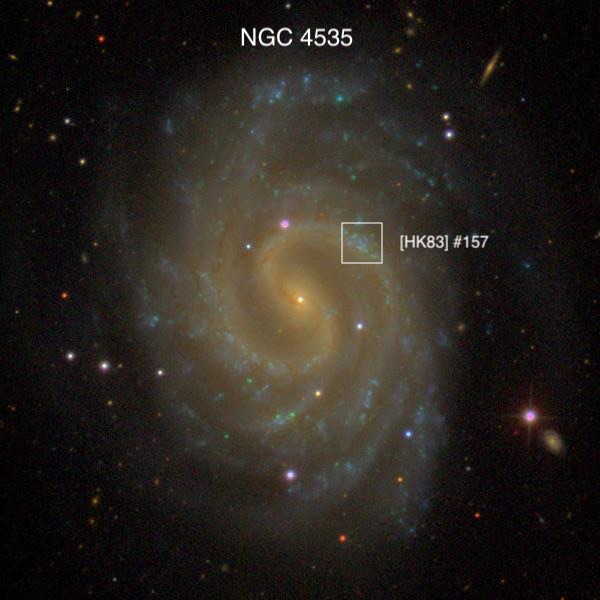



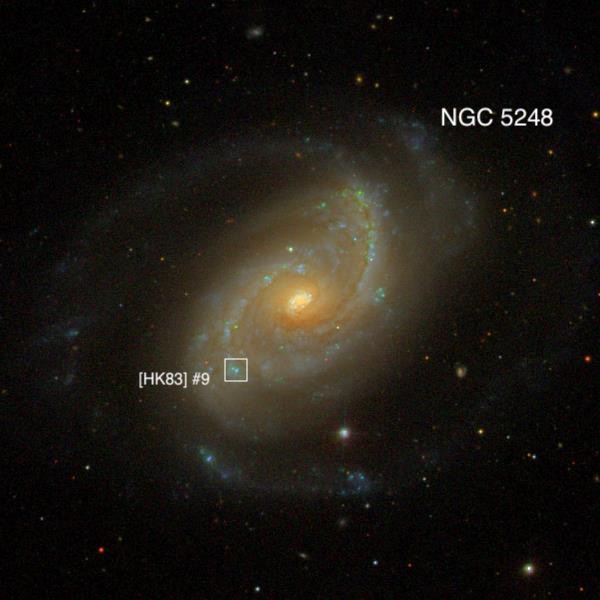
.jpg)
